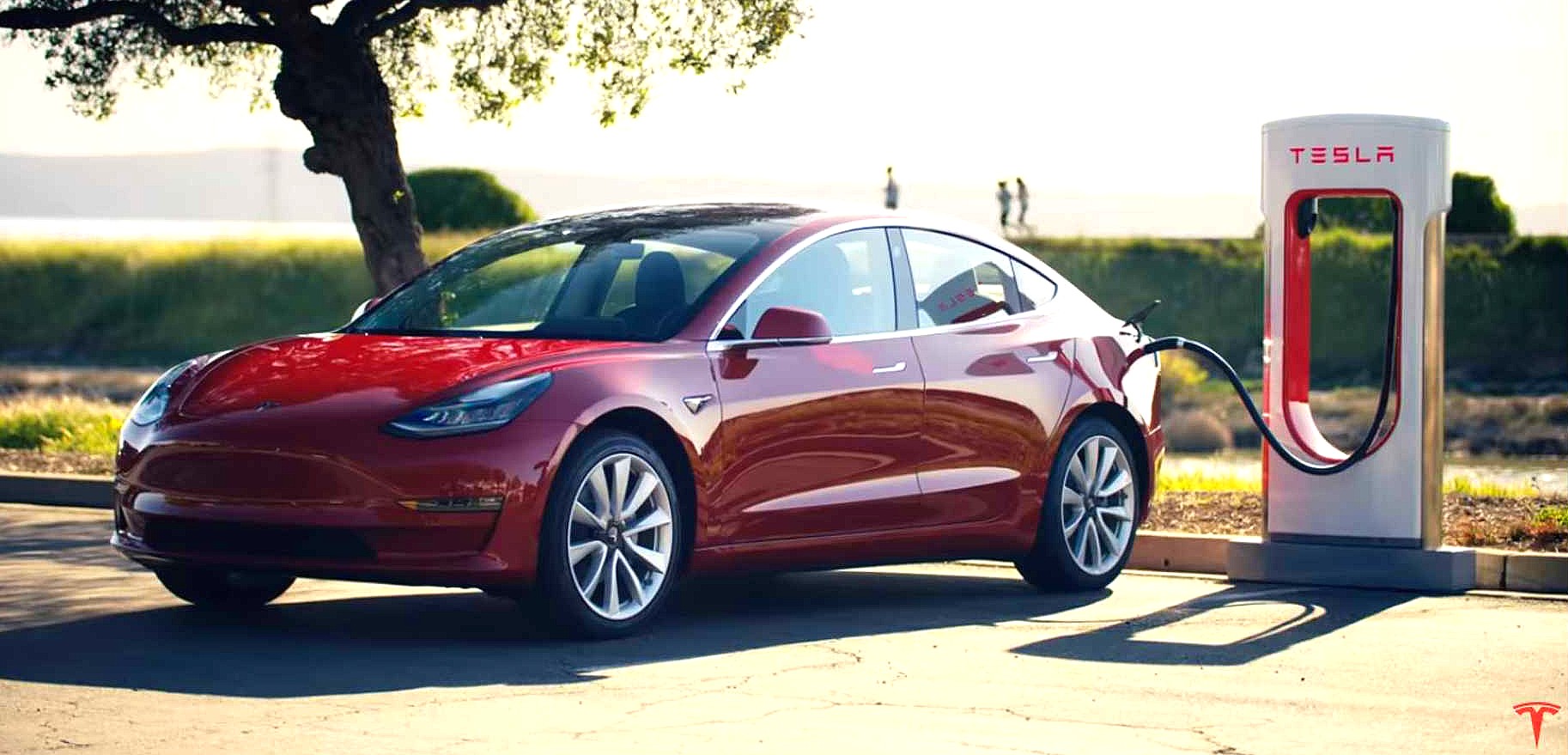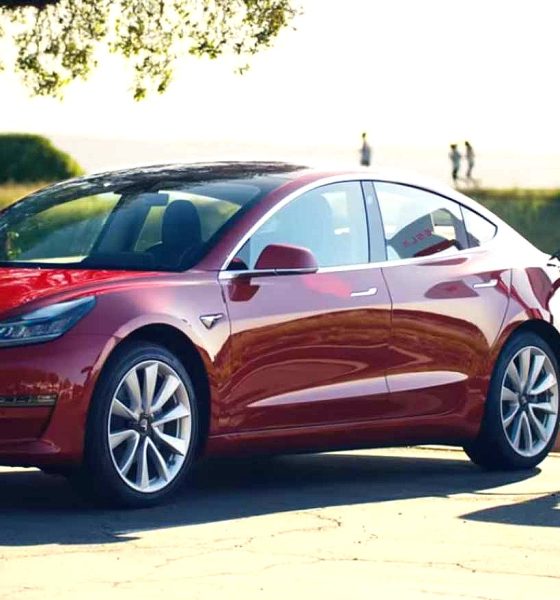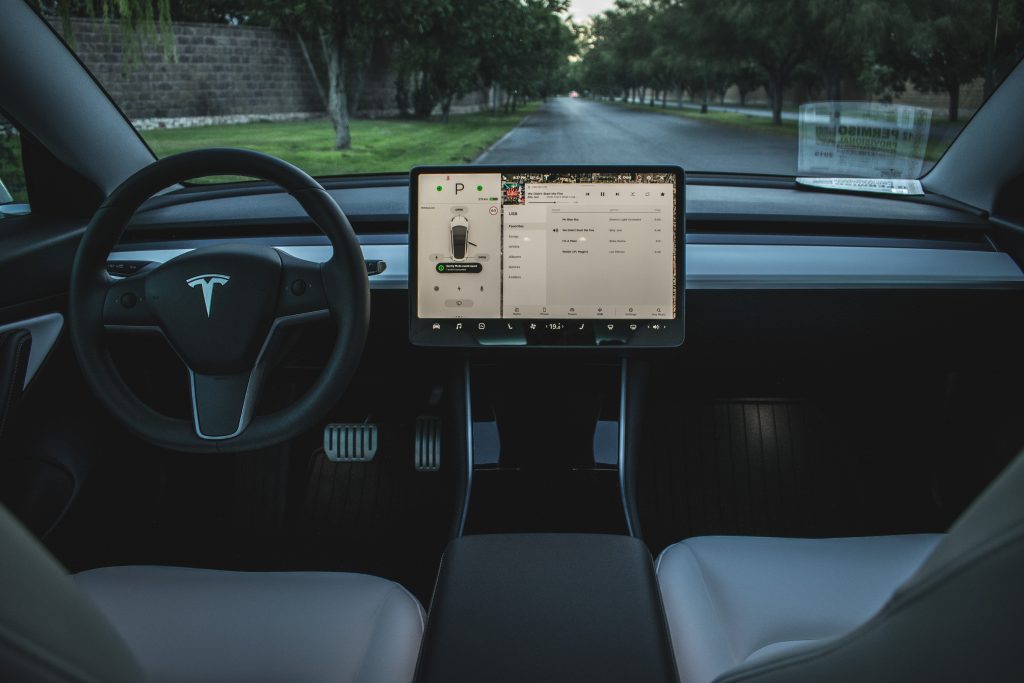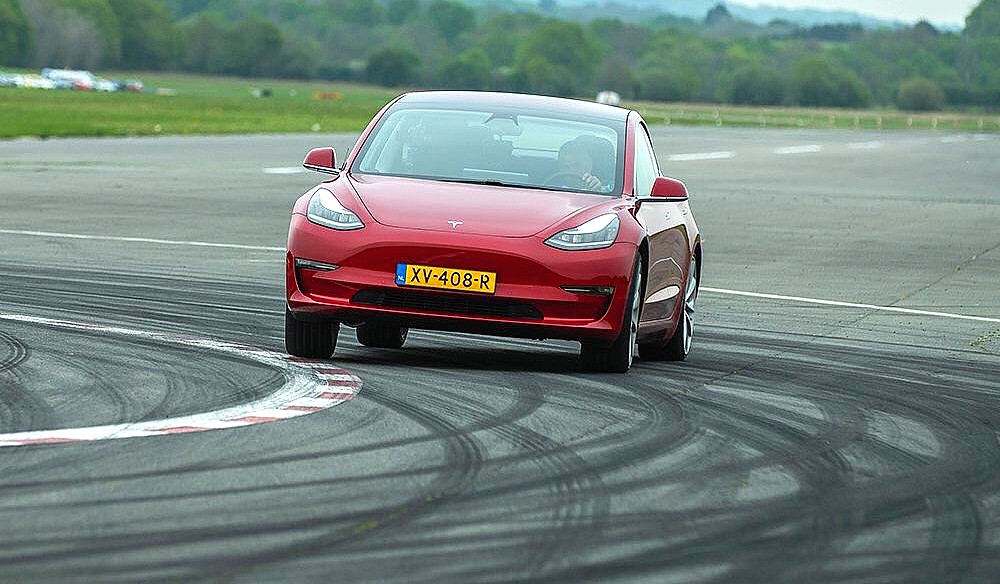

Investor's Corner
The Tesla Model 3’s defiance of TSLA critics and its EV market dominance explained
To state that Tesla (NASDAQ:TSLA) is a polarizing company would be an understatement. Tesla commands a strong following, comprised of avid supporters and passionate critics alike. This was particularly evident in the Model 3, a car that was declared a “lemon” by critics at one point, and a car that has become one of the most popular electric cars in the industry today.
The Model 3 has its own fair share of critics. Last September, high-profile TSLA short Jim Chanos declared that the Model 3 has inherent problems that make it a “lemon.” Seemingly in response to Chanos’ statement, the Model 3 dominated the US luxury auto market in 2018, and with its international rollout this year, the vehicle has also started making an impact in markets such as Norway and China.
TSLA investor @Incentives101, an economist with a background in macro research, stated in a message to Teslarati that Tesla’s vehicles, particularly the Model 3, defied several conventions when it was released. With its unique combination of uncompromising performance, efficiency, and a reasonable price, the Model 3 has become a vehicle that constantly defies critics every step of the way.

The economist explained that consumers purchase vehicles according to preferences that are subject to budget constraints. The buying process then becomes a matter of selecting which car is the best option within the confines of a budget. “Consumers preferences can be easily understood when there is data available i.e when they clearly show what they want. With a car or any good for that matter, consumers are basically solving an optimization problem. Hence, this is why advanced economic models — general equilibrium — are on essence an optimization problem,” the economist wrote.
There are many variables that consumers consider when purchasing a big-ticket item such as a car. Generally, there are no internal combustion vehicles that are as efficient as an electric car, but EVs prior to Teslas usually had worse performance and a higher price, which, in turn, discouraged buyers despite their lower total cost of ownership. Electric cars before the arrival of the original Tesla Roadster and the Model S also introduced a new constraint: range. Under these circumstances, it was not rare to see buyers who valued efficiency and/or are not price-sensitive selecting an EV, and those that valued performance and price opting for a petrol-powered car.
It is these very metrics that the Tesla Model 3 was able to completely address. Tesla refused to compromise with the Model 3, making the electric sedan a vehicle that is incredibly efficient with performance that matches the best that the industry has to offer. What’s remarkable was that Tesla was able to accomplish this while keeping the Model 3’s price reasonable. And this, according to the economist, has resonated with consumers. “When Elon Musk says it’s insane to buy something else other than a Tesla, it’s because it literally is. You can prove it with math,” the economist stated.

The researcher added that this is one of the key reasons why Tesla and the Model 3 have proven incredibly resilient despite the negative narrative surrounding the vehicle and the company as a whole. It is also something that is frequently misunderstood by mainstream analysts and the company’s critics alike. Fortunately for Tesla, consumers by nature are drawn to superior products, and this is steadily becoming more and more pronounced with the Model 3’s international expansion.
“Whenever you read experts saying that Tesla has a 10-year advantage, this is what it means. When the media and Wall Street compare Tesla to other OEMs, when they talk about units of cars vs. other OEMs, it really doesn’t matter. None of them can find an example in history when consumers have behaved as irrationally as what they’re implying. No matter how many hit pieces about Elon Musk or Tesla, how many stock downgrades, how many bear notes, consumers won’t care about it. We already know what consumers care about; it will be impossible to stop it,” the economist wrote.
Tesla stock has so far slipped around 32% this year, following a challenging first quarter and another loss in the second quarter despite record delivery numbers. By contrast, the S&P 500 has risen about 16.7% year to date.
Disclosure: I have no ownership in shares of TSLA and have no plans to initiate any positions within 72 hours.

Investor's Corner
SpaceX IPO is coming, CEO Elon Musk confirms
However, it appears Musk is ready for SpaceX to go public, as Ars Technica Senior Space Editor Eric Berger wrote an op-ed that indicated he thought SpaceX would go public soon. Musk replied, basically confirming it.

Elon Musk confirmed through a post on X that a SpaceX initial public offering (IPO) is on the way after hinting at it several times earlier this year.
It also comes one day after Bloomberg reported that SpaceX was aiming for a valuation of $1.5 trillion, adding that it wanted to raise $30 billion.
Musk has been transparent for most of the year that he wanted to try to figure out a way to get Tesla shareholders to invest in SpaceX, giving them access to the stock.
He has also recognized the issues of having a public stock, like litigation exposure, quarterly reporting pressures, and other inconveniences.
However, it appears Musk is ready for SpaceX to go public, as Ars Technica Senior Space Editor Eric Berger wrote an op-ed that indicated he thought SpaceX would go public soon.
Musk replied, basically confirming it:
As usual, Eric is accurate
— Elon Musk (@elonmusk) December 10, 2025
Berger believes the IPO would help support the need for $30 billion or more in capital needed to fund AI integration projects, such as space-based data centers and lunar satellite factories. Musk confirmed recently that SpaceX “will be doing” data centers in orbit.
AI appears to be a “key part” of SpaceX getting to Musk, Berger also wrote. When writing about whether or not Optimus is a viable project and product for the company, he says that none of that matters. Musk thinks it is, and that’s all that matters.
It seems like Musk has certainly mulled something this big for a very long time, and the idea of taking SpaceX public is not just likely; it is necessary for the company to get to Mars.
The details of when SpaceX will finally hit that public status are not known. Many of the reports that came out over the past few days indicate it would happen in 2026, so sooner rather than later.
But there are a lot of things on Musk’s plate early next year, especially with Cybercab production, the potential launch of Unsupervised Full Self-Driving, and the Roadster unveiling, all planned for Q1.
Investor's Corner
Tesla Full Self-Driving statistic impresses Wall Street firm: ‘Very close to unsupervised’
The data shows there was a significant jump in miles traveled between interventions as Tesla transitioned drivers to v14.1 back in October. The FSD Community Tracker saw a jump from 441 miles to over 9,200 miles, the most significant improvement in four years.

Tesla Full Self-Driving performance and statistics continue to impress everyone, from retail investors to Wall Street firms. However, one analyst believes Tesla’s driving suite is “very close” to achieving unsupervised self-driving.
On Tuesday, Piper Sandler analyst Alexander Potter said that Tesla’s recent launch of Full Self-Driving version 14 increased the number of miles traveled between interventions by a drastic margin, based on data compiled by a Full Self-Driving Community Tracker.
🚨 Piper Sandler reiterated its Overweight rating and $500 PT on Tesla $TSLA stock
Analyst Alexander Potter said FSD is near full autonomy and latest versions showed the largest improvement in disengagements, from 440 miles to 9,200 miles between critical interventions pic.twitter.com/u4WCLfZcA9
— TESLARATI (@Teslarati) December 9, 2025
The data shows there was a significant jump in miles traveled between interventions as Tesla transitioned drivers to v14.1 back in October. The FSD Community Tracker saw a jump from 441 miles to over 9,200 miles, the most significant improvement in four years.
Interestingly, there was a slight dip in the miles traveled between interventions with the release of v14.2. Piper Sandler said investor interest in FSD has increased.
Full Self-Driving has displayed several improvements with v14, including the introduction of Arrival Options that allow specific parking situations to be chosen by the driver prior to arriving at the destination. Owners can choose from Street Parking, Parking Garages, Parking Lots, Chargers, and Driveways.
Additionally, the overall improvements in performance from v13 have been evident through smoother operation, fewer mistakes during routine operation, and a more refined decision-making process.
Early versions of v14 exhibited stuttering and brake stabbing, but Tesla did a great job of confronting the issue and eliminating it altogether with the release of v14.2.
Tesla CEO Elon Musk also recently stated that the current v14.2 FSD suite is also less restrictive with drivers looking at their phones, which has caused some controversy within the community.
Although we tested it and found there were fewer nudges by the driver monitoring system to push eyes back to the road, we still would not recommend it due to laws and regulations.
Tesla Full Self-Driving v14.2.1 texting and driving: we tested it
With that being said, FSD is improving significantly with each larger rollout, and Musk believes the final piece of the puzzle will be unveiled with FSD v14.3, which could come later this year or early in 2026.
Piper Sandler reaffirmed its $500 price target on Tesla shares, as well as its ‘Overweight’ rating.
Investor's Corner
Tesla gets price target boost, but it’s not all sunshine and rainbows

Tesla received a price target boost from Morgan Stanley, according to a new note on Monday morning, but there is some considerable caution also being communicated over the next year or so.
Morgan Stanley analyst Andrew Percoco took over Tesla coverage for the firm from longtime bull Adam Jonas, who appears to be focusing on embodied AI stocks and no longer automotive.
Percoco took over and immediately adjusted the price target for Tesla from $410 to $425, and changed its rating on shares from ‘Overweight’ to ‘Equal Weight.’
Percoco said he believes Tesla is the leading company in terms of electric vehicles, manufacturing, renewable energy, and real-world AI, so it deserves a premium valuation. However, he admits the high expectations for the company could provide for a “choppy trading environment” for the next year.
He wrote:
“However, high expectations on the latter have brought the stock closer to fair valuation. While it is well understood that Tesla is more than an auto manufacturer, we expect a choppy trading environment for the TSLA shares over the next 12 months, as we see downside to estimates, while the catalysts for its non-auto businesses appear priced at current levels.”
Percoco also added that if market cap hurdles are achieved, Morgan Stanley would reduce its price target by 7 percent.
Perhaps the biggest change with Percoco taking over the analysis for Jonas is how he will determine the value of each individual project. For example, he believes Optimus is worth about $60 per share of equity value.
He went on to describe the potential value of Full Self-Driving, highlighting its importance to the Tesla valuation:
“Full Self Driving (FSD) is the crown jewel of Tesla’s auto business; we believe that its leading-edge personal autonomous driving offering is a real game changer, and will remain a significant competitive advantage over its EV and non-EV peers. As Tesla continues to improve its platform with increased levels of autonomy (i.e., hands-off, eyes-off), it will revolutionize the personal driving experience. It remains to be seen if others will be able to keep pace.”
Additionally, Percoco outlined both bear and bull cases for the stock. He believes $860 per share, “which could be in play in the next 12 months if Tesla manages through the EV-downturn,” while also scaling Robotaxi, executing on unsupervised FSD, and scaling Optimus, is in play for the bull case.
Will Tesla thrive without the EV tax credit? Five reasons why they might
Meanwhile, the bear case is placed at $145 per share, and “assumes greater competition and margin pressure across all business lines, embedding zero value for humanoids, slowing the growth curve for Tesla’s robotaxi fleet to reflect regulatory challenges in scaling a vision-only perception stack, and lowering market share and margin profile for the autos and energy businesses.”
Currently, Tesla shares are trading at around $441.








